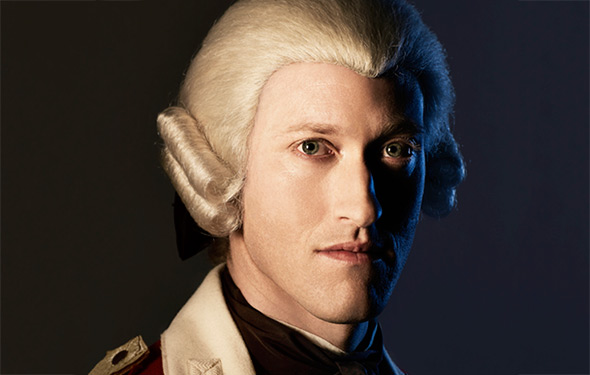 |
| "Portrait of Lieutenant Governor John Graves Simcoe" by Anonymous (c. 1796) |
And then there's Ontario: my home province. Here, the name varies from one municipality to the next - which brings us to the title of this post. In Toronto, the provincial capital and my home city, the Civic Holiday is officially called Simcoe Day. (Note: There have been attempts made to have the name Simcoe Day be applied all across Ontario, but no dice.)
| John Graves Simcoe's signature. |
So who is the "Simcoe" in Simcoe Day, and why would Toronto's government choose to name the holiday after him in the first place? His full name is John Graves Simcoe (1752-1806) - and people who are in the loop re: current period dramas ought to find the name familiar as he is one of the historical figures featured in AMC's drama TURN, which is set during the American Revolutionary War.
 |
| John Graves Simcoe as played by Samuel Roukin in TURN (Photo (c) AMC) |
Given all this, it comes as no real surprise that Simcoe bears a rather negative reputation in the US - and Benedict Arnold, at least, is a pariah in Canada as well due to his known switching of allegiances in the middle of the Revolution. So why would Toronto want to commemorate Simcoe with his own holiday?
Well, Canada is not the United States. And Toronto, especially, has a very different conception of John Graves Simcoe. Here, Simcoe is remembered as the first Lieutenant Governor of Upper Canada, a British colony founded in 1791 for the main purpose of accommodating United Empire Loyalists who had taken shelter in Quebec during and after the American Revolutionary War. Not only that, but it was Simcoe and the Queen's Rangers who first began work in 1793 on the colonial capital city of York. If this does not ring a bell, note that York is now known by a different name: TORONTO.
 |
| John Graves Simcoe and Augustus Jones, supervising the Queen's Rangers of York cutting trees during the construction of Yonge Street, 1795. Image by Charles William Jeffreys (c. 1795) |
What this says overall is that the same person can have very different reputations and stigmas attached to them historically depending on who is telling the story. And while TURN's Simcoe can at times be a right regular bastard, the Simcoe that Torontonians know and remember is very different man. Hero or villain? The truth is quite likely somewhere between the two.
Sources
Mealing, S. R. "SIMCOE, JOHN GRAVES." Dictionary of Canadian Biography Online. University of Toronto/Université Laval, 2003. Web. 4 Aug. 2014.
Schellhammer, Michael. "AMC's "TURN": Everything Historians Need to Know." Journal of the American Revolution. 1 Apr. 2014. Web. 4 Aug. 2014.
Image Credits
All historical depictions of Simcoe in the public domain
Promotional image from TURN (c) AMC
Hi thanks for sharing this info iq option scam
ReplyDelete